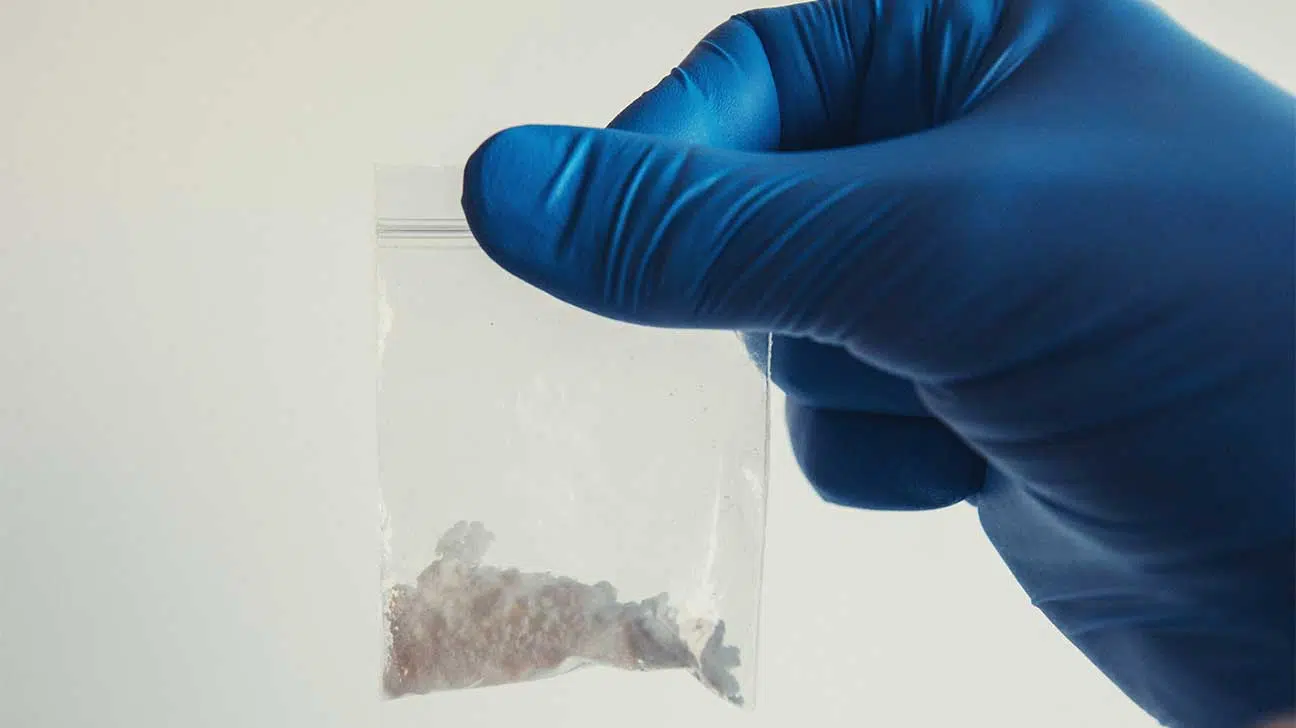The History Of Crack: Where Does It Come From?
Crack cocaine became widespread in the early 1980s, disproportionately impacting African American communities. Though the resulting “War on Drugs” has ended, crack cocaine use is still a problem in the United States.

The history of cocaine began thousands of years ago, as people in South America chewed coca leaves for their energizing effects.
Coca leaves themselves have a relatively mild effect, but when those leaves are ground and distilled into a powder, that powder becomes cocaine, a highly addictive stimulant drug.
The history of crack cocaine use began much more recently than cocaine in general. Crack did not become an issue for the first time until the 1970s and 1980s.
How Are Crack And Cocaine Different?
The history of crack begins with cocaine history as a whole, as crack and cocaine both start as the same illegal drug: a highly-concentrated coca leaf powder.
The primary difference between crack and cocaine is the preparation process.
Crack cocaine is made from powder cocaine. A person may turn cocaine into crack by adding baking soda to the powder, mixing it with water, and then heating it until a solid mass forms.
That mass may be broken into small “rocks“ or “crystals“ that can be easily smoked with a glass pipe or similar instrument.
Powder cocaine, in contrast, cannot be smoked and is usually snorted or injected.
Cocaine has a high melting point before being turned into crack so does not produce the amount of vapor necessary for smoking.
When Did The Crack Epidemic Begin?
Cocaine use, and by extension, cocaine addiction, grew rapidly in the United States from the 1970s to the late 1980s.
A glut of cocaine entered the United States from South America. Because of this increased supply, American drug dealers needed a way to maximize profits.
Crack cocaine became a simple solution, allowing dealers to sell more drugs to a wider array of buyers.
Over a few decades, crack use became one of the most common types of cocaine use in the country.
Health Effects Of The Crack Epidemic
The crack cocaine epidemic produced many adverse health effects.
Cocaine itself leads to several harmful side effects, and because crack uses cocaine as its primary ingredient, it shares these side effects.
As crack cocaine use spread across the country, so did its negative health consequences.
For example, some physical side effects of crack cocaine include:
- heart complications (racing heart, inflammation, irregular heartbeat, and heart attack)
- constricted blood vessels and high blood pressure
- dilated pupils
- internal organ damage
- insomnia and restlessness
- appetite loss
- extreme weight loss and malnourishment
- seizures
- convulsions
- lung damage (from smoking)
Some of the side effects of crack impact mental and emotional health.
These mental health side effects may include:
- anxiety or panic
- paranoia
- erratic behavior and mood swings
- clouded thinking
- delusions or psychosis
- depression when not using the drug
Ronald Reagan And The War On Drugs
As crack quickly became the most commonly used form of cocaine, it reached major cities such as New York City, Los Angeles, and Miami.
President Ronald Reagan responded to this crack cocaine epidemic with the controversial War on Drugs.
What Was The War On Drugs?
The War on Drugs was a drug policy that heavily penalized crack cocaine use. The Reagan Administration aimed to reduce drug addiction by enforcing harsh punishments.
Though “the War on Drugs” is a broad name, this “war” focused disproportionately on crack use rather than on substance abuse in general.
Law enforcement administered longer sentences for crack cocaine than for other drugs.
For example, according to research on the crack epidemic, a person caught with just five grams of crack would face a minimum of five years in prison.
In contrast, it took 500 grams of powder cocaine to warrant the same penalty, in spite of the fact that both crack and cocaine have the same primary ingredient.
How Did The War On Drugs Impact The African American Community?
The War on Drugs and its impact can still be felt to this day, especially within Black American communities.
Black people, who have historically faced issues such as income disparity and job discrimination, afforded crack much more easily than powder cocaine.
Furthermore, some Black men sold crack cocaine as a way to mitigate economic hardships.
As a result, Black people, especially young Black men, accounted for most of the people arrested for crack possession.
The Crack Epidemic Vs. The Opioid Epidemic
Researchers have noted differences between the crack epidemic, which primarily impacted Black communities, and the opioid epidemic, which also impacted white communities.
For example, when researchers analyzed media sources, they found that when these sources discussed drug use and addiction, they tended to portray white people more sympathetically.
Crack Use Today
Although crack use has dwindled since the epidemic began, it still remains a concern. High school students in particular may be vulnerable to crack use.
According to the U.S. Department of Justice, roughly 4% of high school seniors have tried the drug.
Learn more about cocaine facts and statistics.
How Is Crack Addiction Treated Today?
Today, researchers have gained a better understanding of how addiction works.
Although the aftereffects of the War on Drugs continue to impact many communities, the National Institute On Drug Abuse (NIDA) calls for a different approach.
According to NIDA, addiction is not a choice but a complex mental health disorder.
People develop addictions through a combination of genetics, life circumstances, and other vulnerabilities.
Addiction, therefore, requires treatment. With rehab centers, cocaine hotlines, and therapy approaches centered on treating cocaine abuse, treatment is available.
Effective treatment for crack addiction may include:
- detox services
- inpatient drug rehab
- outpatient addiction rehab
- addiction counseling, including individual and group therapy
Find Help For Crack Addiction
Cocaine addiction, including crack cocaine addiction, is a complicated and difficult disorder. Fortunately, with the right treatment, the brain and body can heal.
Spring Hill Recovery Center offers evidence-based treatment for crack addiction, including therapy and aftercare services.
If you or someone you love may have an addiction, contact our helpline today to learn more.
- Britannica — Crack Epidemic https://www.britannica.com/topic/crack-epidemic
- National Library Of Medicine — The War On Drugs That Wasn’t: Wasted Whiteness, “Dirty Doctors,” And Race In Media Coverage Of Prescription Opioid Misuse https://www.ncbi.nlm.nih.gov/pmc/articles/PMC5121004/
- United States Department Of Justice — Crack Cocaine Fast Facts https://www.justice.gov/archive/ndic/pubs3/3978/3978p.pdf


